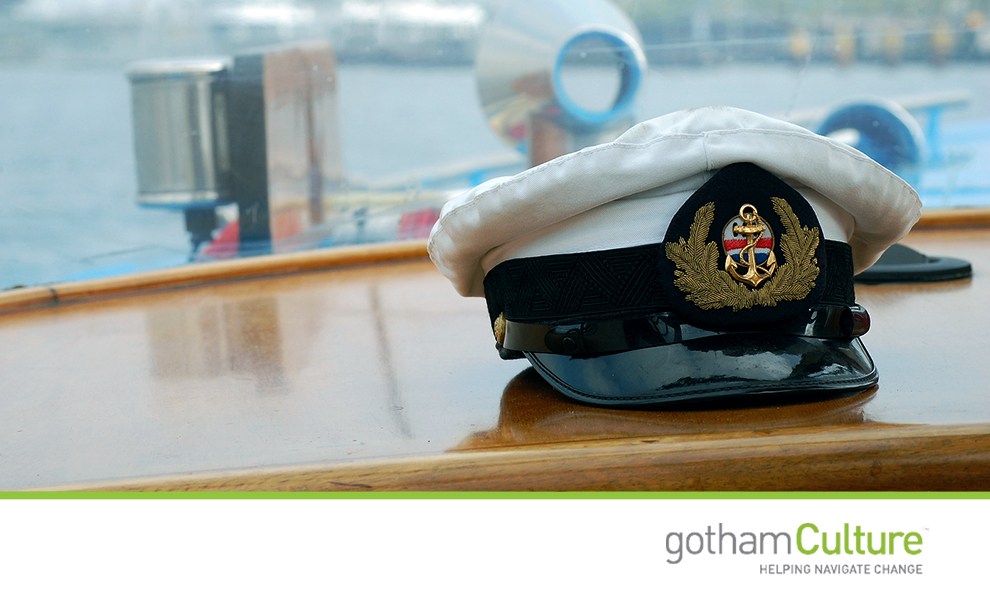A CEO’s departure is like a captain leaving his ship. A smooth, amicable transition lets the company weather the storm; anything less destroys the boat.
“With the CEO gone, who will steadfastly guide us through choppy waters?” employees wonder. Will the fresh CEO be an adept navigator, adjudicator, and leader? Those closest to the outgoing leader might even jump ship with her, meaning new crew will have to be hired, too.
With proper planning, even the snowiest of CEO storms won’t knock the craft off course.
JetBlue’s Big Switch
Rewind to February 2007, when a blizzard caused a near-total shutdown for JetBlue — a customer service and PR nightmare that cost the company north of $40 million and prompted a leadership change.
Former CEO David Neeleman shouldered the blame and tapped then-COO David Barger to fill his shoes. While their leadership styles differed, Barger’s continuation of Neeleman’s transparency kept JetBlue’s craft afloat.
Moving from COO to CEO, Barger shifted his focus from internal operations to JetBlue’s shareholders and the traveling public. Still, he understood the importance of continued advocacy on his employees’ behalf. He made a point of attending every employee (or “crewmember,” as JetBlue refers to them) orientation. Regardless of role or position in the company, Barger engaged them and listened to their ideas.
JetBlue has a new CEO now, but Barger’s outstanding service to the airline continues to earn him industrywide recognition.
Hidden Icebergs of CEO Upheaval
Every CEO hopes for a smooth transition like Barger’s, but, frankly, not all go so swimmingly.
For one, rocky transitions can cause a financial downturn, which may require layoffs. Voluntary reduction programs, such as early retirement, risk regrettable turnover — losing talented sailors rather than those who barely have their sea legs. The risk rises if the incoming CEO isn’t well-known within the company, triggering uncertainty that can accelerate departures.
CEO changes can also affect the speed of decision-making and, more broadly, productivity levels. If the incoming CEO can’t achieve buy-in early from important players like the CMO, CFO, COO, and board members, it will hamper his or her ability to make necessary, decisive choices following the transition.
Furthermore, the company’s good name is tied inextricably to the CEO’s reputation. Sixty-six percent of consumers perceive a link between the two, and executives attribute 49 percent of a company’s image to the CEO’s own. If the CEO becomes known as an indecisive, incapable leader, that can damage perceptions of the company for years to come.
Step in With Style
A seamless passing of the baton is critical, and even seasoned executives can drop it if they’re not careful. While there’s no single recipe for success, there are several steps you can take for a smoother succession:
1) Be an individual.
Leadership switches present a paradox. While you, the new CEO, are hired to help the company adapt to changing times, you’re often trained to lead the way the previous CEO led.
Don’t be afraid to break this mold. You aren’t the previous CEO, nor should you be. If you’ve done the research to support a new direction in employee management, marketing, investor relations, or production, then go for it. Bring your own strengths to the position while championing the accomplishments of your predecessor.
2) Respect the cultural landscape to build upon it.
When you become CEO, understand your bookends. Begin with your cultural vision in mind, but also appreciate what came before. As prior COO, JetBlue’s Barger had taken the company’s pulse, and he put in the effort to protect it as pulsation turned to turbulence.
The key is to develop a plan with the help of company stakeholders for how to move from the current culture to your ideal company. If you’re taking the helm after a scandal or forced CEO swap, be especially careful. Spend time with rank-and-file employees like Barger did to understand the company’s vibe. If you can’t appreciate the current culture, you have no hope of making it your own.
3) Manage executives with grace and communication.
Remember that senior executives have served as the prior CEO’s trusted advisers, so they’ll be especially sensitive to the transition. Allow the previous CEO to exit gracefully, but be sure to communicate to senior executives that his or her vision will carry on. FBN Securities recently expressed doubts about Apple CEO Tim Cook, who succeeded Steve Jobs, because it perceived he’d failed to inspire Apple’s leadership to carry forth Jobs’ vision.
When a revered CEO steps down, instability is inevitable. If the change occurs without planning, admiration, and open communication, however, the ship’s as good as sunk.
But a new captain at the helm is also a chance to start fresh — to chart a new course. So rally the crew, unfurl the sails, and grab the wheel. You’ve got an incredible voyage ahead.
This article first appeared on CEO.com.

